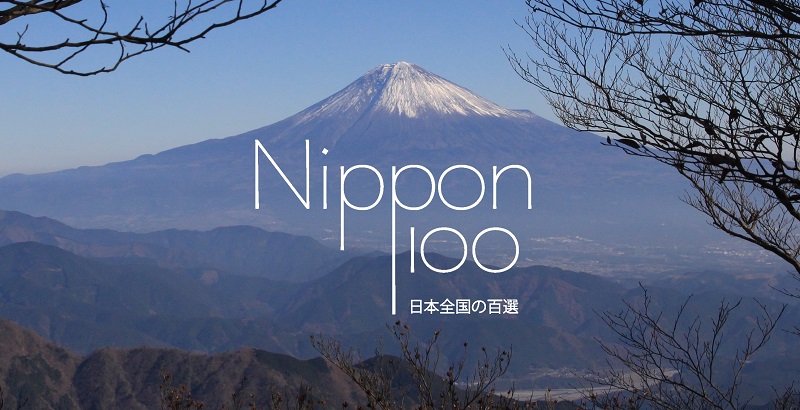In Southern Kyushu, Yakushima island is home to the highest peaks of that part of Japan. They are covered by a thick forest, from tropical jungles to subalpine forests of ancient cedars. In the center of the island, among these thousand years old trees, called yakusugi, the Jomon-sugi is the king. The majestic cedar is known as Japan oldest, and is definitely one of the most impressive tree we have seen in Japan.
The path leading to the Jomon-sugi is a long one, from 8 to 10 hours back and forth. The cedar is introduced locally as the oldest in Japan, aged between 2000 and 7000 years. The Jomon is also one of the Heisei hundred views, located in a Japanese National Park and a World Heritage area since 1993.
It is actually the second super old tree we met in Japan, after the Jindaizakura, the country (and possibly the world)’s oldest cherry tree, in Yamanashi prefecture.
Yakushima Wonderland
The hike is eleven kilometers long one way. Its departure is 600 meters high, while the Jomon-sugi is 1300 meters above the sea level. Two different landscapes are crossed: first a quiet wood and some valleys, walking along an abandoned railway that once was used by timbers, and then a majestic forest, along a steep path. The wild nature of Yakushima was one of Miyazaki‘s inspiration for several movies, including Princess Mononoke.











While the first part of the hike might be monotonous (apart from the barrier-free bridges), the second one is definitely worth the time spent along the railway. The steepest part is also the closest to Yakushima’s nature. The way includes several wooden stairs, some root stairs and allows to walk near several yakusugi, the millennial trees, and wonderful green mosses.
Several signs are to be found, describing the island rich history, mainly dealing with cedars. After a first exploitation during the beginning of Edo period (1603-1868), the forest was again occupied by timbers during the first half of the 20th century. This continued until the 1960s.
The best season to discover the Jomon-sugi
Yakushima is a very special island. Depending on the elevation, the climate varies from Hokkaido’s to Okinawa’s. The rainfall rates is twice Japan mainland’s one, with 4500 mm yearly on the coastline, and more than 10 000 mm in the mountains!
Fall is the best time to walk around, with less rain than any others times, a clearer sky, cool but not cold temperature. That’s also the moment when leaves are getting their seasonal colors. Last but not the least, there is slightly less people at that time of the year (compared to Golden Week and the summer months). Anyway, the path is always wet, and gets more and more slippy as you get close to the Jomon. From December, many hikes become even more difficult, with snow getting on the way.















The King in the Forest
The Jomon-sugi here you are! After being washed up by the long walk some of you might think it is not an extraordinary tree after all. The wild nature that surround it and the constant fog and the distance from the decks (built to protect the fragile old tree) are definitely not helping. But you may rest for a while and take your time to appreciate it. The Jomon-sugi has so many stories to tell. It is worth all the hours spent!



A piece of advices before walking
For such a hike, a bad gear is not an option. Warm clothes, good shoes, food and water are more than necessary. Around Anbon port, several shops offer equipment to rent on a daily basis (it is even possible to book, and we advise you to do so if you plan to walk during the peak season, for example at Mori-no-kirameki).
It is also important to pay attention to the schedule. To walk back and forth in a single day, you will have to start no later than 9AM and leave the Jomon Sugi around 1PM at the latest. Most people begin to hike around 5-7AM with the first buses.

As for us, we enjoyed the hike in late November, walking nine hours straight. We took the 4:23AM bus in Anbo to catch the 5:20 one at the museum (see below) and managed to get back with the 4PM bus. We had the chance to avoid the rain. The temperature dropped to 6°C when we were at the Jomon. Below, it was around 12°C.
Somehow the Jomon Sugi is the tree hiding the forest. While it is an impressive tree, there is far more to discover on Yakushima.



How to get there?
You will reach Yakushima by plane from Kagoshima, Fukuoka and even Osaka. But most travelers are getting there by boat, the two main harbors being Miyanoura and Anbo.

By boat from Kagoshima, several options are available: speedboat, regular ferry or using the cargo boat Hibiscus:
-
- Jetfoil: Two to three hours. 8300 yens one way and 15000 yens back and forth.
-
- Yakushima 2: Around four hours, 4900 yens one way or 8900 back and forth. OK for cars.
- Cargo boat Hibiscus: Thirteen hours with a stopover at Tanegashima (but it is not allowed to leave the boat), 7200 yens back and forth.
Only the jetfoil is going to Anbo port. It is the most convenient to reach the path to the Jomon-sugi (a few kilometers away from the Yakusugi museum, the place to catch the bus is going up in the mountains. If you are staying elsewhere, you will need to use several buses to start the hike, which might take a long time).
Important notice: The tourist office in Anbo is in the main supermarket building (we discovered it at the end of our stay).
Finally, a good way to learn more about the many hikes and get valuable advices is to consult the website Yes! Yakushima.









